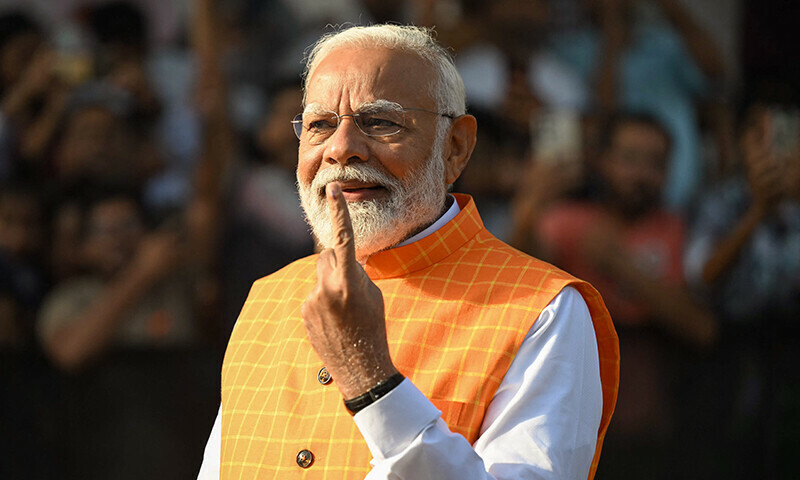Indian Prime Minister Narendra Modi, a 73-year-old Hindu nationalist leader, is poised to win a third term in office on Tuesday. Leading the world’s most populous country and its fastest-growing major economy, Modi has been seen by the United States and European allies as a crucial counterbalance to China.
Modi, who is advocating for a permanent seat on the UN Security Council, has bolstered his image internationally by leveraging India’s presidency of the G20 in 2023 and is aiming to further his diplomatic achievements by bidding for the 2036 Summer Olympics.
Diplomatic Relations Under Modi’s Leadership
Pakistan
Modi’s administration has maintained a firm stance against engaging with Pakistan, citing cross-border terrorism as a major issue. The two nations, with a history of three wars and numerous skirmishes since their partition in 1947, have had strained relations, especially over the contested region of Jammu and Kashmir. Although Modi made a surprise visit to Lahore in 2015, relations deteriorated in 2019. Nevertheless, Modi’s congratulatory message to Pakistani Prime Minister Shehbaz Sharif in March has raised hopes for improved ties.
United States and Europe
President Joe Biden has highlighted the US-India relationship as a pivotal partnership for the 21st century, hosting Modi for a state dinner and approving a $4 billion sale of advanced drones to India. This deepening relationship aims to counterbalance China’s influence, despite concerns from rights groups about rising authoritarianism and discrimination against India’s Muslim minority. The US-India relationship faced a challenge when the US Justice Department charged an Indian citizen with plotting an assassination in New York allegedly approved by India’s intelligence agency.
India also maintains strong ties with European nations, particularly France, with ongoing deals for Rafale fighter jets and Scorpene-class submarines.
China
India-China relations hit a low in 2020 after a deadly clash along their 3,500-kilometer border. Both nations continue to maintain a significant military presence along this contested frontier. While India has increased its military spending, it remains a fraction of China’s budget. Despite their rivalry, China remains India’s second-largest trading partner.
Russia
India’s relationship with Russia dates back to the Cold War, with Moscow being India’s largest arms supplier. Modi has refrained from condemning Russia’s invasion of Ukraine, opting instead for neutrality and increasing purchases of discounted Russian crude oil. Modi’s recent congratulations to President Vladimir Putin on his re-election highlight the ongoing “special” relationship between the two countries.
The Global South
Modi has positioned India as a leading voice for the Global South, emphasizing the importance of developing nations in global decision-making. Under his leadership, the African Union was admitted to the G20, reinforcing India’s role within the BRICS group of emerging economies.
Conclusion
A third term for Narendra Modi is expected to further his decade-long diplomatic ambitions, as he continues to navigate complex relationships with neighboring countries and global powers while promoting India’s growing influence on the world stage.

Leave a Reply